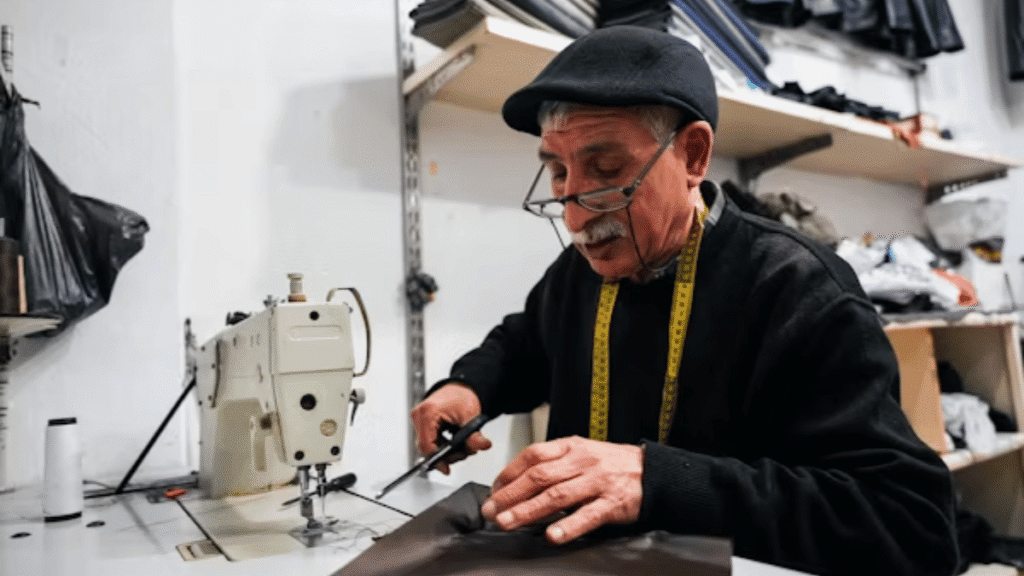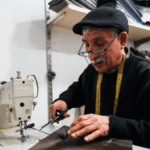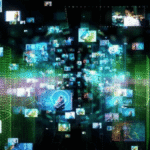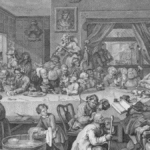Zuschneidfelle—a term deeply rooted in craftsmanship and textile history—has evolved from its traditional role as a simple cutting material into a versatile component in modern design, fashion, and sustainability. Within the first glance, the concept might appear obscure or old-fashioned, but its resurgence across industries tells a compelling story of how tradition can adapt to the future. Zuschneidfelle refers to prepared hides or cutting furs traditionally used in tailoring, upholstery, and leatherwork. Today, they have become symbols of sustainable craftsmanship, blending natural materials with advanced textile innovation.
Understanding Zuschneidfelle’s today means examining its journey through artisanal workshops, fashion ateliers, and industrial production lines—each reshaping its meaning and purpose. What was once a utilitarian resource for tailors has transformed into a design material reflecting ecological awareness and technical precision.
The Origins and Historical Significance of Zuschneidfelle
In its earliest context, Zuschneidfelle’s emerged in the German-speaking regions of Europe, where artisans valued animal hides for their durability and adaptability. These furs were meticulously processed, softened, and cut to exact dimensions to serve in garment creation, particularly in cold climates. Over centuries, Zuschneidfelle became synonymous with practicality, luxury, and craftsmanship.
The process required patience and expertise: hides were cured, conditioned, and cut based on intended use—be it clothing, protective gear, or interior lining. For tailors, Zuschneidfelle’s represented the foundation of precision cutting. For households, they embodied warmth and status.
By the mid-19th century, technological developments in tanning and textile machinery allowed for greater experimentation. Zuschneidfelle’s evolved from purely natural fur into processed materials combining natural and synthetic fibers, marking a shift toward industrialization without completely abandoning its artisanal roots.
The Contemporary Relevance of Zuschneidfelle
In the modern era, Zuschneidfelle’s is no longer confined to its traditional uses. It has found relevance across industries—from sustainable fashion to eco-conscious interior design. The increasing emphasis on traceability, ethical sourcing, and circular production has given Zuschneidfelle new meaning in contemporary culture.
Today’s textile innovators experiment with Zuschneidfelle’s-derived materials to balance texture, durability, and environmental responsibility. Designers utilize it not just for aesthetic value but as a conscious decision toward more sustainable material use.
As fashion journalist Eva Reinhardt once said, “Zuschneidfelle’s is no longer a relic of tradition—it’s a material of conversation, bridging heritage and modern ethics.”
Modern Applications and Market Adaptation
In modern industries, Zuschneidfelle’s serves a variety of functions, reflecting its adaptability and enduring importance.
Table 1: Modern Applications of Zuschneidfelle Across Industries
| Industry | Primary Use | Innovation Aspect | Environmental Impact |
|---|---|---|---|
| Fashion & Apparel | Outerwear, accessories | Fusion of organic and recycled fibers | Reduces waste through repurposing |
| Automotive | Seat upholstery, steering covers | Enhanced comfort and temperature regulation | Promotes eco-leather alternatives |
| Interior Design | Rugs, wall décor | Integration with minimalist aesthetics | Encourages natural material revival |
| Sports & Outdoor | Protective gloves, footwear | Combines toughness with flexibility | Minimizes reliance on synthetics |
| Craftsmanship | Artisanal projects, handmade bags | Emphasis on texture and finish | Sustains small-scale artisan markets |
The table highlights how Zuschneidfelle’s, once seen as a niche material, now intersects with industrial design philosophies. For instance, in the automotive sector, sustainable Zuschneidfelle’s alternatives help reduce the carbon footprint of vehicle interiors. Similarly, in fashion, it supports slow design movements where every material is traceable and purposeful.
The Rise of Ethical Zuschneidfelle
The ethical dimension of Zuschneidfelle marks a major shift from its past. With the growing consumer demand for cruelty-free and sustainable materials, manufacturers are rethinking sourcing practices. Many now produce Zuschneidfelle using vegetable tanning, recycled hides, or plant-based alternatives that mimic the tactile richness of traditional fur.
This ethical transition is not merely a marketing trend—it represents an ideological realignment. The textile community increasingly acknowledges that beauty and conscience can coexist. As eco-designer Lena Vogt noted, “Modern Zuschneidfelle is proof that luxury need not come at nature’s expense.”
Sustainability and Innovation in Zuschneidfelle Production
Contemporary production processes integrate sustainable methods at every stage—from raw material selection to final cutting. Advanced techniques such as waterless tanning, natural dyeing, and biodegradable coating have revolutionized the environmental footprint of Zuschneidfelle manufacturing.
Table 2: Sustainable Practices in Zuschneidfelle Manufacturing
| Production Stage | Traditional Method | Sustainable Modern Alternative | Benefit |
|---|---|---|---|
| Tanning | Chemical-based treatment | Vegetable or enzyme-based tanning | Reduces toxic discharge |
| Dyeing | Synthetic dyes | Natural plant pigments | Enhances biodegradability |
| Finishing | Heavy chemical coatings | Water-based or biodegradable sealants | Preserves air quality |
| Waste Handling | Disposal of scraps | Upcycling into accessories | Promotes circular economy |
These shifts reflect how traditional craftsmanship can align with global sustainability goals. In several European workshops, artisans now use digital precision cutting to minimize material waste, combining tradition with technology.
The Craftsmanship Heritage of Zuschneidfelle
At the core of Zuschneidfelle lies the artisan—the individual who transforms raw hides into functional elegance. Even in an age of automation, craftsmanship remains the soul of Zuschneidfelle production. Each piece demands an understanding of material texture, grain direction, and structural strength.
For many, the process is as spiritual as it is technical. “Every hide tells a story,” says master craftsman Markus Thalberg. “Working with Zuschneidfelle means respecting nature’s canvas—its flaws, its beauty, its individuality.”
Workshops dedicated to preserving traditional techniques have become cultural landmarks. These spaces celebrate slowness in an era obsessed with speed. They stand as reminders that material culture is as much about identity as it is about utility.
Technological Innovation and the Digital Future
Digitalization has transformed the Zuschneidfelle landscape. Computer-aided design (CAD) now allows for more accurate pattern cutting, reducing waste and ensuring consistent quality. Robotics and AI-driven cutting systems have entered the production lines, optimizing material use and reducing errors.
The digital revolution has not displaced the artisan—it has empowered them. Traditional tailors who once relied on hand-measured templates now use laser-guided precision tools while retaining their artistic touch.
The industry’s embrace of hybrid methods—digital precision coupled with human artistry—has allowed Zuschneidfelle to thrive in an increasingly competitive market.
Environmental and Economic Implications
The modern Zuschneidfelle ecosystem represents more than a craft revival; it reflects the intersection of economy and ecology. Sustainable Zuschneidfelle supports rural economies, sustains artisanal employment, and contributes to biodiversity-friendly sourcing.
Furthermore, eco-certified Zuschneidfelle products command higher market value, appealing to luxury brands that emphasize environmental storytelling. In an era when transparency defines trust, brands using responsibly sourced Zuschneidfelle attract ethically minded consumers.
The environmental benefits include:
- Reduced chemical pollution from tanning and dyeing processes
- Lower water consumption through innovative processing techniques
- Minimized waste due to digital pattern efficiency
- Increased longevity of products, encouraging mindful consumption
Aesthetic and Cultural Evolution
Aesthetically, Zuschneidfelle has transcended its original purpose. Designers reinterpret it through contemporary lenses—minimalism, maximalism, and even avant-garde experimentation. Fashion runways in Berlin and Milan have showcased collections where Zuschneidfelle-inspired materials complement recycled denim, bamboo silk, and organic wool.
In interior design, it embodies tactile comfort. Whether used as minimalist wall décor or textured flooring, Zuschneidfelle invokes natural warmth—a subtle rebellion against sterile modernism.
As critic Anna Kretschmer observed, “Zuschneidfelle is no longer about covering surfaces—it’s about uncovering meaning.”
Global Trends and Market Insights
The global Zuschneidfelle market has seen steady growth due to the shift toward conscious material choices. Boutique ateliers and large corporations alike are exploring eco-friendly alternatives and transparent supply chains.
Key Market Insights Include:
- Growing demand for sustainable luxury materials among younger demographics.
- Expansion of eco-certification programs regulating sourcing and processing.
- Increased collaboration between technology startups and traditional workshops.
- Greater consumer education on material provenance and recyclability.
The convergence of innovation and heritage ensures that Zuschneidfelle remains relevant, adaptable, and symbolically rich.
The Educational Role of Zuschneidfelle
Institutions teaching design and textile arts have begun reintroducing Zuschneidfelle into their curricula, not merely as a material but as a case study in adaptive sustainability. Students analyze its texture, composition, and history to understand how cultural values shape material use.
By teaching the philosophy behind Zuschneidfelle, educators emphasize that materials are not neutral—they embody ethics, history, and ecological narratives.
The Future of Zuschneidfelle in Sustainable Design
The path forward for Zuschneidfelle lies in balance: maintaining traditional artistry while embracing scientific progress. The next generation of designers is expected to explore bio-based innovations such as lab-grown hides, vegan leather composites, and digital fabrication.
Future Zuschneidfelle may not come from animals at all—it may emerge from mycelium (fungal) structures, fruit waste fibers, or recycled textile blends. These innovations hold the promise of preserving tactile authenticity while eliminating environmental strain.
In the coming decade, Zuschneidfelle could evolve into a metaphor for material intelligence—a bridge between nature, craft, and technology.
Consumer Awareness and Responsibility
Consumers play a defining role in shaping the Zuschneidfelle narrative. Informed buyers increasingly question the origins of what they wear, sit on, or carry. Their curiosity drives transparency across the supply chain.
Before purchasing Zuschneidfelle products, consumers should consider:
- Source authenticity: Is the material ethically or sustainably produced?
- Durability: Does it offer long-term value rather than disposable convenience?
- Repairability: Can the product be restored or repurposed over time?
- Certification: Does it comply with recognized sustainability standards?
By prioritizing mindful choices, consumers ensure that demand supports ethical supply, reinforcing the material’s modern identity.
Conclusion: Zuschneidfelle as a Symbol of Conscious Craft
The transformation of Zuschneidfelle from traditional hide to sustainable textile innovation mirrors humanity’s broader journey toward conscious consumption. It demonstrates how heritage can coexist with environmental ethics, and how craftsmanship can evolve without losing authenticity.
Zuschneidfelle, in its renewed form, tells a story of resilience—a material once bound to necessity now flourishing as a symbol of responsibility and creativity. Whether in a fashion studio in Berlin, a design classroom in Milan, or a home in Tokyo, Zuschneidfelle embodies a timeless lesson: the future of material design is not in abandoning the past but in reimagining it.
As we continue to innovate, one truth remains clear—Zuschneidfelle’s enduring value lies not just in what it is, but in what it represents: the meeting of nature, craft, and conscious design.
Frequently Asked Questions (FAQs)
1. What does Zuschneidfelle mean?
Zuschneidfelle refers to specially prepared hides or cutting furs traditionally used in tailoring and leathercraft. It represents both material functionality and craftsmanship precision.
2. How is modern Zuschneidfelle different from traditional versions?
Contemporary Zuschneidfelle often incorporates sustainable tanning, digital cutting, and plant-based alternatives, reducing environmental harm while enhancing performance.
3. Is Zuschneidfelle environmentally friendly?
Yes. Modern production emphasizes eco-tanning, recycling, and waste reduction, making Zuschneidfelle one of the more sustainable textile options.
4. Can Zuschneidfelle be used in vegan or cruelty-free products?
Absolutely. Innovations in bio-based and synthetic materials now allow designers to recreate the texture and function of Zuschneidfelle without animal derivatives.
5. Why is Zuschneidfelle becoming popular again?
Its resurgence stems from the global shift toward sustainability, artisanal revival, and the growing appreciation for long-lasting, ethically sourced materials.







